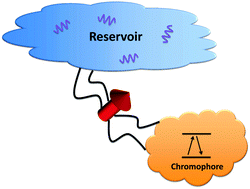Quantifying non-Markovianity for a chromophore–qubit pair in a super-Ohmic bath
Abstract
An approach based on a non-Markovian time-convolutionless polaron master equation is used to probe the quantum dynamics of a chromophore–qubit in a super-Ohmic bath. Utilizing a measure of non-Markovianity based on dynamical fixed points, we study the effects of the environmental temperature and the coupling strength on the non-Markovian behavior of the chromophore in a super-Ohmic bath. It is found that an increase in the temperature results in a reduction in the backflow information from the environment to the chromophore, and therefore, a suppression of non-Markovianity. In the weak coupling regime, increasing the coupling strength will enhance the non-Markovianity, while the effect is reversed in the strong coupling regime.


 Please wait while we load your content...
Please wait while we load your content...